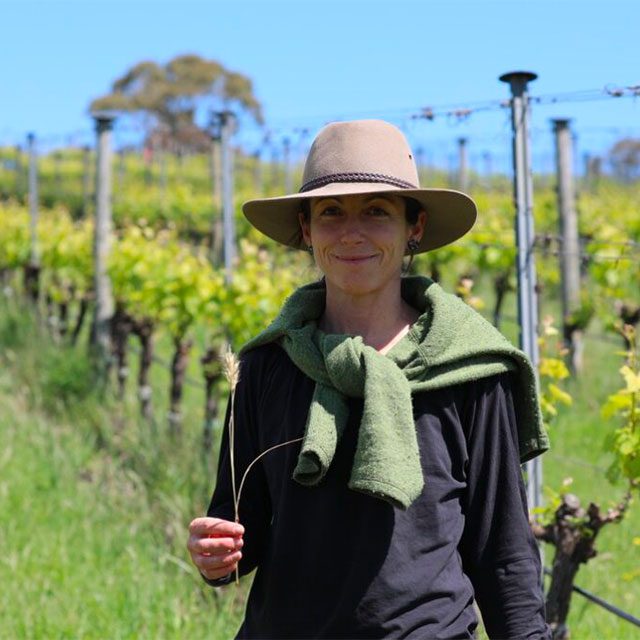1. Tell us about your experience in grape growing?
We established Ngeringa Vineyards in 2001, it is now one of the oldest certified biodynamic vineyards in South Australia. Planting our vineyard on certified biodynamic land without the use of chemicals was very rewarding.
We weren’t after a fast and enormous crop and were prepared to be patient, doing considerable handwork to minimise weed competition and grow healthy, balanced vines. The quality of our fruit and the health of the vineyard confirms it was worth it.
Our vines are more resilient than would be expected during times of heat and fungal pressure. Our non-chemical, low mechanical approach creates resilience in the vineyard where a rich diversity of microbes and insects achieve their own natural balance. For the last 10 years, we have complemented this with significant native plantings across our property, close to the vineyard and lately within the vineyard.
2. What prompted you to want to be involved in the EcoVineyards project?
Being long committed to ’sustainable’ viticulture and conservation, it is exciting to be part of a nationally recognised program to help continue to reduce the distinction between farming and landscape regeneration.
3. What do you hope to achieve from your involvement in the EcoVineyards project?
EcoVineyard offers us the opportunity to trial native grasses in our certified vineyards without the use of conventional herbicides. Despite potentially higher weed density, we are hoping we might have enough success as to be able to demonstrate native grasses are economically viable within an organic system and provide valuable insectary value.
4. Have you tried to increase biodiversity on your property before undertaking this project? If so, how?
Since 2008, we have planted over 1000 native seedlings per year across Ngeringa which was originally cleared farmland. Originally we grew our own plants from seed, but more recently have relied on a local Trees For Life grower. Each year, we put on a planting day for friends and the community and have transformed our property and the landscape in a relatively short amount of time.
5. Why do you think it is so important for growers to try and build natural resilience on their property?
The health of each farm is reliant on the health of our landscape. And the health of the landscape is directly tied to the degree of native biodiversity within it.
Most growers are operating in a cleared landscape void of much of the biodiversity needed to provide long term resilience. By returning generous areas of our properties to a diverse selection of original species and reducing/cutting out nasty chemicals, we increase our soil water holding capacity and reduce heat intensity, ground temperature and insect imbalance. Birdlife becomes more diverse and less problematic and we humans feel happier! The result is greater overall resilience for the farm and the landscape.
Equally important, is the greater and urgent need to prevent species loss. The Adelaide Hills is part of one of Australia’s 12 biodiversity hotspots. We have numerous species under threat of extinction and have already lost bird, frog, insect, fish and mammal species. We can’t afford to lose any more for our own long term prosperity and morally, for the sake of our children and generations to follow.
Each ecosystem is like a puzzle, with any species threatened or lost, it is a piece of the puzzle which is lost and therefore the puzzle can no longer be completed. The trouble is, we rely on the full picture of the puzzle to ensure our long term health and resilience as a society. How many pieces of the puzzle can we lose before we can’t see the picture….?
Note, a recent ABC Foreign Correspondent episode featuring a long term scientific study in Europe revealed 60-70% insect species have been lost due to chemical farming and biodiversity loss. These scientists fear the very fabric of our food production system is under threat.
6. Looking to the future, what do you see as a new ‘normal’ for grape growers on their properties?
The new normal will be reduced or no chemical viticulture and growers having a better understanding of their vineyard being part of a wider ecosystem. Our dream is for all farmers to shy away from bare land and instinctively look to devote 15-30% of their properties to diverse native vegetation while protecting any remnant vegetation.
Most of all we want growers to understand that building resilience in their properties will ultimately benefit them. If we no longer need the more conventional methods of vineyard management we can save time and money!
READ THE CASE STUDY

